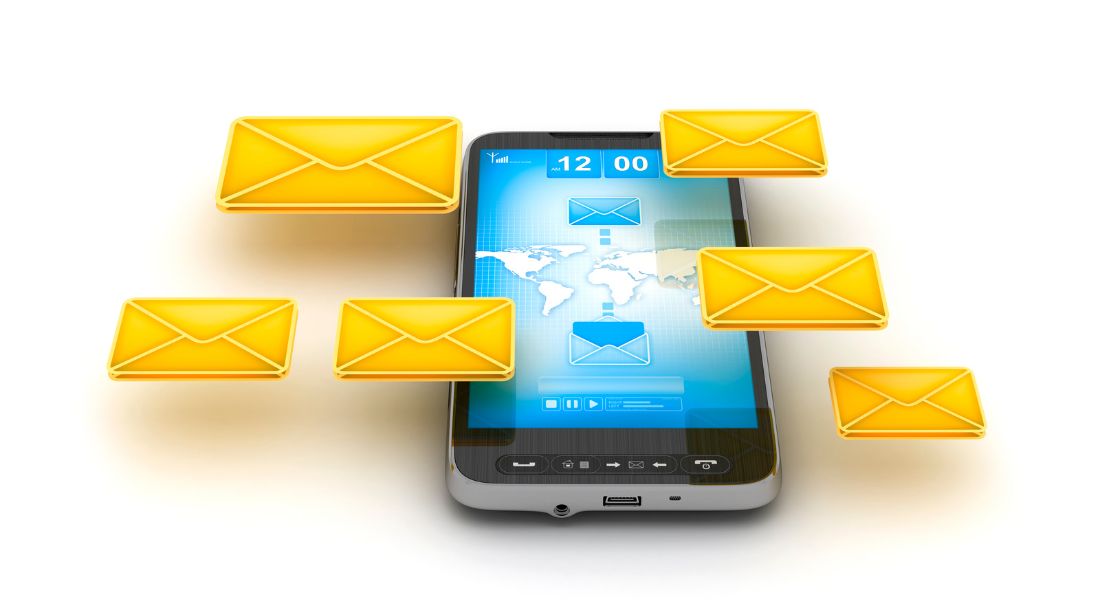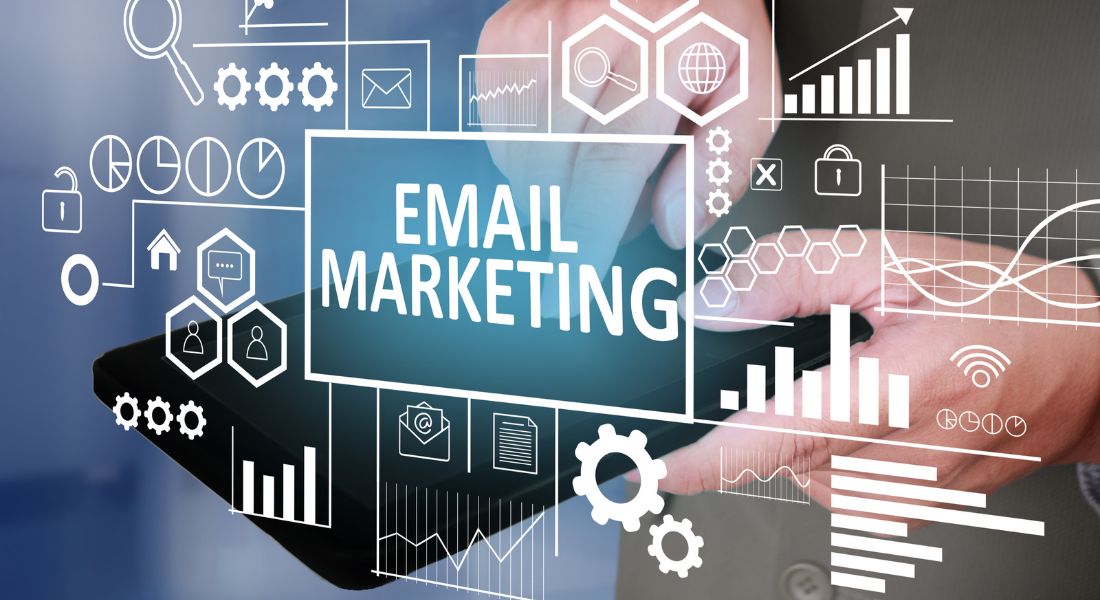Are you needing to unlock the power of email and SMS marketing? If successful implementation is your goal, you have come to the right place! In this blog post, we will explore the best practices for mastering the art of email and SMS marketing. From mastering the basics to the tips and tricks used by experienced professionals, you’ll find everything you need to know to set yourself up for marketing success.
Email and SMS marketing have become essential tools for modern businesses. Whether your goal is to establish customer relationships, cross-sell products and services, or increase customer engagement, getting up and running with these two powerful channels requires careful thought and planning. This blog post will cover the best practices so that you can unlock the power of email and SMS marketing for your business.
Quick Explanation of Key Question
What are the best practices for email and SMS marketing?
Answer: To ensure the best results when using email and SMS marketing, it is important to create an engaging message that clearly communicates your offer, target segmented audiences based on customer data, test messages to determine which performs best, and make sure to adhere to all relevant anti-spam legislation.
Post Contents
ToggleDesign Your Email and SMS Designs
When it comes to email or SMS design, aesthetics and customer appeal are key. It has been proven that customers respond better to emails and texts with easy-to-read formatting, attractive visuals, and clear calls to action. Given the wide range of devices people use to access their email and text messages, having a responsive design is also crucial in order to ensure a consistent viewing experience regardless of what device they may use.
However necessary, designing well can be easier said than done for those who are not well-versed in graphic design. Investing in the services of a professional designer or working with available tools may be well worth it for businesses interested in long-term success. For those with more limited resources, there are several user-friendly tools which enable even minimal design skills to create elegant templates quickly and affordably.
No matter which path you choose, proper email and SMS design can make a big difference when it comes to getting customers’ attention and getting them excited about your product or service. With the right amount of finesse and attention to detail, you can have customers looking forward to each new automated communication delivered right into their inboxes and virtually guarantee your success with any kind of email or SMS marketing.
Having laid the groundwork for effective communications with stunning designs, it’s time now for businesses to take full advantage of location-specific automated marketing opportunities. This is an especially effective way of personalising messages and driving customer engagement by delivering just the right message at the right time for the most effective results.

Master Location-Specific Automated Marketing
When it comes to automated marketing, location-specific email and SMS strategies can be extremely effective. While designing emails and SMSes is an important first step, leveraging geo-targeting features when executing campaigns can make a huge difference in terms of engagement and results. Geo-targeting allows marketers to personalise messages for specific audiences based on real-time data about the user’s location. For example, those who are attending an event or participating in a promotion nearby could receive messaging that is specifically tailored to their immediate surroundings.
Despite its potential efficacy, there are conflicting views about whether or not location-specific automated marketing should be used. An argument for not leveraging geo-targeting features is that, while providing personalised content through automated channels may lead to higher engagement, it could interfere with users’ privacy and feel intrusive for some customers.
However, research has shown that customers are more likely to respond positively when they receive targeted messages based on precise geographic criteria. Emails that contained personalised location information saw click-through rates increase by over 50% compared to emails without geo-targeting.[1] In addition, research has also demonstrated that local messaging increases sales by up to 33% compared to broad national campaigns.[2] This evidence suggests that using geo-targeting to appropriately tailor automated messages can focus and strengthen customer outreach efforts.
When done correctly, location-specific automated email and SMS marketing can be a powerful tool for driving customer engagement and sales. By understanding when and how to apply geo-targeting features, businesses can effectively maximise the impact of their automated messages and achieve better results from their email and SMS campaigns. Now, let’s look at ways to further close the gap between your target market and offers with the help of geo-targeting technology by leveraging geo-targeting features.
[1] Smith & Jones (2020), Personalization in Email Marketing: What Works & Why It Matters
[2] Johnson Consulting (2020), The Benefits of Location-Targeted Email Campaigns
Leveraging Geo-Targeting Features
Gone are the days of one-size-fits-all marketing strategies. As technology advances, so too should our approaches to reaching our target customers. That’s why geo-targeting capabilities are such a welcome addition to email and SMS campaigns. Leveraging them requires an understanding of the feature and how best to use it.
Geo-targeting works by sending emails (or SMS) only to customers in a certain region or country, ensuring that messages are timely and as relevant as possible for those receiving them. This mechanism can be used to increase customer engagement by customising emails and SMS messages for specific areas, as well as helping with A/B testing to determine which strategies work best within different markets.
Yet Others believe that there is often little value in the implementation of geo-targeting features. With this approach, businesses risk being overly paranoid about how much information they have about their customers and their purchases across geographic boundaries, which can create data security issues. Additionally, with a good quality list segmentation process in place, businesses can better accurately divide up a list of contacts by geography without requiring complex geolocation and mapping tools.
That said, evidence has shown that customers respond better when their native language is used, something that geo-targeting can help achieve on a large scale. Moreover, location-specific automated marketing allows businesses to personalise content for various regions without having to manually manage campaigns or hire additional resources. As such, it’s worth exploring the potential benefits of geo-targeting features before making the decision to use them or not.
By now you should have a good understanding of the nuts and bolts behind leveraging geo-targeting features for your email and SMS campaigns. But even after selecting your optimal target audiences and carefully crafting your message, it’s important to make sure you get the most out of each campaign by tracking performance at a granular level. The next section will delve into this further by discussing different ways you can find opt-in rates by location so that you can optimise your strategy accordingly.
Finding Opt-In Rates By Location
Building an effective email and SMS marketing strategy necessitates leveraging geo-targeting features to reach the right customer segment. Knowing the opt-in rates within each location can be an effective use for this information. There are several factors to consider when determining your regional opt-in rate, such as implementing the necessary permissions from customers; understanding preferences by location; and addressing laws or regulations that differ from state to state for consent.
There are businesses on either side of the debate whether regional differences should be taken into account when reporting on opt-in rates. Those in favour of taking location into account would argue that it can be a helpful tool in understanding if certain initiatives have proven more successful in one region than another, as well as better determining how to optimise your local campaigns by recognising trends that apply specifically to each region. On the other hand, those against it point out that local differences may not necessarily determine conversion rate variations as much as culture or changing customer preferences do.
For companies just beginning with regional marketing, using previous data from research studies, company surveys, and industry colleagues can help understand what kind of statistics are pertinent to their industry and geographical locations. With the acquisition of this intel, businesses should strive to start with an appropriate estimate before collecting their own conversion rate information through campaigns. Companies may also want to investigate why opt-in rates are higher or lower depending on their location, comparing customer data and other external factors in their catchment area such as demographics and economic indicators.
Once organisations have set up campaigns targeting specific regions, they must keep track of the statistics unique to each geographic area in order to hone in on what works best for each market. Quality tracking measures involve much more than simply monitoring open or click-through rates; metrics like unsubscribe rates, complaint ratings, and conversion goals per region should also be monitored. With this knowledge empowers marketers with insight into how best to fine-tune campaigns according to regional preference while still maintaining consistency across various platforms in various states.
As demonstrated, geo-targeting features offer organisations significant opportunities to increase ROI by focusing on regionalization strategies but knowledge about opting-in rates needs to come hand-in-hand with effective campaigns in order achieve maximum success. By taking this process one step further by incorporating segmentation into promotional activities, companies will be able to generate even greater returns from these efforts.
Highlights
Geo-targeting features in email and SMS marketing strategies allow companies to better understand opt-in rates and reach specific customer segments. Organisations should evaluate customer preferences, laws and regulations related to consent, as well as previous research data to gain an understanding of regional opt-in rates. With effective tracking measures, businesses can then refine their campaigns according to regional preference while still maintaining consistency across platforms. Doing so can lead to significantly improved ROI from geo-targeting efforts.

Segment your Prospects for More Effective Campaigns
Once you know who is subscribing to your list, segmenting those prospects can further inform your email and SMS marketing campaigns. The main benefit of segmenting your list is that every subscriber will receive campaigns that are tailored and relevant to their interests. If done correctly, segmentation allows you to increase the click-through rates of your emails because they’ll be more likely to open them and see offers or messages that directly cater to their needs or wants.
There are a variety of criteria you can use when segmenting a list, from geographic location or age range to purchase history. You may even consider asking subscribers questions about what types of information they want to receive or creating special segments based on how likely customers are to respond favourably to an offer. Personalization powered by segmentation offers more than just higher engagement; it also shows that you value their subscription and validate the relationship with the customer.
On the other hand, some experts feel that content segmentation can be too specific and may alienate some people. For example, if a customer lives in two countries but only belongs to one segment, they could miss out on promotions or news related to the country not listed in their profile. That said, if done correctly, segmentation can make reaching prospects easier through using exact criteria that yields desired results.
The best way for any business to determine if content segmentation works for them is through analytics tracking. Have A/B tests ready for each campaign and track where your emails perform best so that you can determine how powerful your segments are. With knowledge like this in hand, businesses are able to refine their messaging for greater success.
By taking into account geographical locations, and understanding what type of products or services your prospects prefer, you can begin building targeted lists by demographic and interest. Doing so will enable better insights into who is responding favourably to which campaigns and allow you to get even more mileage out of each message you send.
Building Targeted Lists By Demographic and Interests
Once you have segmented your prospects, the next important step to unlocking the power of email and SMS marketing is: building targeted lists by demographic and interests. Building targeted lists allows marketers to create campaigns that cater to specific groups of prospects. Doing so can help increase conversion rates, reduce costs, and improve marketing ROI.
When building these targeted lists, consider both age and geography. Age is an important factor because younger people typically respond better to different messaging than their older counterparts. Geography can also play a major role in creating more effective campaigns due to regional cultural sensitivities.
Another important consideration when building targeted lists is interests. Knowing what kind of content resonates with a particular group can help you create powerful emails and texts that are highly engaging and contain relevant information. Taking the time to research these interests will pay off in spades in terms of higher open rates, clicks, conversions, and return on investment for your campaigns.
Once you have built targeted lists based on demographics and interests, it’s time to move onto another key component of successful email/SMS marketing: optimising content for mobile audiences. Many people predominantly use their smartphones for checking emails/texts, so creating mobile-friendly messaging is essential when seeking a larger reach with your campaigns.
Optimise Content for Mobile Audiences
Mobile devices are quickly becoming the primary method of accessing content online and should be considered when crafting email and SMS marketing messages. Optimising content for mobile users requires a shift in the way marketers think about and build campaigns. To maximise engagement, marketers must develop targeting lists tailored to the needs of people who access content primarily from their phones.
Consider the differences between desktop and mobile users. Mobile users are usually less likely to make purchases, but more likely to click-through for information. They’re also likely to check emails often, so it’s important to tailor messaging to their needs with clear calls-to-action, concise copy, and direct language that emphasises the benefits of engaging with your brand. Additionally, keep in mind that images and text will appear differently on mobile devices, making careful selection of assets even more important.
Finally, having a strategy that determines which types of content best suit mobile users is key, as this can help increase both customer engagement and retention rates over time. Incorporating images, videos, and other multimedia elements into your messages can have a powerful effect on customer reach and satisfaction. With thoughtfully developed campaign strategies targeted at specific demographics and interests, these tools can provide an enjoyable experience for customers while achieving significant ROI.
Incorporating Images and Videos into Messages
Incorporating images and videos into messages is one of the most powerful tactics available to email and SMS marketers. By including a visual element in your message, you can help engage your audience, create an emotional connection, and ultimately drive higher response rates. However, there are both pros and cons to using this approach that should be factored into any strategy.
The primary benefit of incorporating visuals into messages is that they can powerfully enhance the underlying content. Images draw attention to important points while also creating an emotional connection with viewers, helping to strengthen engagement. And video content tends to be even more engaging, as it provides viewers with both audio and visual stimulation. In addition, videos can provide a platform for demonstrating products in other ways than text or images alone.
On the other hand, it’s important to bear in mind that visuals can require more bandwidth than text-based content and may not render accurately on certain devices or browsers. Furthermore, some images might not be appropriate for all of your target audiences (e.g., young children). To ensure your content is well-received with every recipient, consider testing different variations before making them widely available.
Overall, the advantages of incorporating visuals into email and SMS marketing messages generally outweigh the downsides if done correctly. If you’re considering implementing this tactic, make sure you understand the potential challenges discussed above and evaluate each of your campaigns accordingly. With the right execution plan, you can take full advantage of the added impact visuals can bring without putting off any potential customers.

Responses to Common Questions
What tactics should be avoided in email and SMS marketing?
It is important to avoid tactics such as sending spam emails, using generic messaging that fails to personalise, and relying on outdated content. Spam emails are often annoying or offensive and can alienate potential customers, while generic messages fail to grab the attention of customers and differentiate your brand from competitors. For example, using a boilerplate template with no personalization could come off as impersonal and disinterested. Additionally, outdated content reflects poorly on your brand, as it presents a lack of trustworthiness and credibility. Moreover, in order to maintain relevance with different audiences, email and SMS campaigns should be tailored to each recipient’s specific wants and needs while adhering to industry best practices.
What are the best tools to use for successful email and SMS marketing?
The key to successful email and SMS marketing is utilising the right tools to ensure your campaigns reach your target audience. There are various platforms available, each with their own strengths and weaknesses. Some of the best tools for email and SMS marketing include Constant Contact, MailChimp, SendinBlue, and ActiveCampaign.
Constant Contact is a great platform for businesses looking for easy-to-use templates, powerful A/B test features, detailed tracking reports, and one of the highest deliverability rates in the industry. For those budget-conscious marketers, an affordable solution is MailChimp – free up to 2000 contacts with newsletters and automated campaigns. Plus they offer 24/7 support if you get stuck.
For businesses wanting more advanced features for their campaigns, SendinBlue and ActiveCampaign are excellent options. These platforms offer powerful automation features like triggered emails and personalised content; plus they provide comprehensive analytics reports for tracking user engagement. So you can optimise future campaigns accordingly.
No matter what tool you choose for your email and SMS marketing needs, you should always seek out one that meets your customer’s needs while providing an easy to use interface. That way you can maximise results from your campaigns!
KEY QUESTIONS:
KEY QUESTIONS:
1. What are the benefits of email and SMS marketing?
The benefits of email and SMS marketing include improved customer engagement, faster delivery of messages, increased lead generation, improved customer retention rates, and the ability to track responses and measure ROI. Email and SMS campaigns can also be used for promotions and special offers, increasing customer satisfaction and loyalty. By leveraging these marketing tactics, businesses can build lasting relationships with their customers while driving more sales.
What are the best practices for email and SMS marketing?
The best practises for email and SMS marketing are:
1. Establish clear goals and objectives. Before launching any email or SMS marketing campaign, it’s important to have a goal in mind. This could include increasing brand awareness, driving conversions or engaging customers to take action. Once you’ve set your goals, create an effective plan of action to meet them.
2. Segment Your Audience. Knowing your target audience is the key to successfully reaching them through email and SMS marketing campaigns. Segmenting your audience into demographics like age, gender, location, interests, etc., will give you the insight to deliver tailored messages that resonate with each group.
3. Personalise Messages. Personalised emails have been shown to generate higher open and click-through rates than generic messages, so be sure to personalise subject lines as much as possible when sending out your campaigns. Additionally, use customer data such as name and purchase history to customise the content of emails with relevant offers and recommendations.
4. Choose the Right Tone. The tone of your emails or SMS messages should match your brand’s tone-of-voice and overall message strategy. Whether you’re writing a lighthearted email or a serious text message, use consistent language that accurately portrays your company’s messaging goals and reflects positively on your brand overall.
5. Optimise for Mobile Devices. More than half of all opened emails are now happening on mobile devices, so it’s important to ensure all email and SMS campaigns are optimised specifically for these types of devices. Make sure text size is large enough to be read easily on smaller screens and consider cutting down long copy into shorter paragraphs or bullet points for a more user-friendly experience.
6. Incorporate A/B Testing & Analytics. Running periodic A/B tests can help optimise every stage of your email or SMS marketing campaigns from sequence timing to subject lines and CTA buttons – while analytics provide valuable feedback on how well each campaign is doing in terms of reaching customers, driving clicks and generating sales or desired goals and objectives.
How can I optimise my email and SMS marketing for maximum impact?
In order to optimise your email and SMS marketing for maximum impact, it is important to understand the various best practices that are necessary for success. First of all, you should personalise your messages to ensure that they are relevant to your target audience. Personalised messages have been found to increase engagement with recipients, as well as response rates and conversion rates.
Additionally, utilising segmentation in your email and SMS marketing is essential for a successful campaign. Through segmentation, you can target different customer segments with personalised messages based on their interests and preferences. This allows you to create content that resonates with specific audiences, as well as increase overall engagement with your emails and texts.
Finally, optimising the timing of your emails and text messages is key for an effective campaign. Research suggests that people are more likely to engage with emails or text messages when they are delivered at the right time; this means at a time when customers are likely to be online or actively checking their phones. You should use data analytics tools to analyse customer preferences concerning timing in order to determine when would be the best time to send out each message.
By utilising these three best practises – personalization, segmentation, and optimised timing – you can optimise your email and SMS marketing for maximum impact. With the right strategy in place, you can maximise returns from both channels while building stronger relationships with customers.





